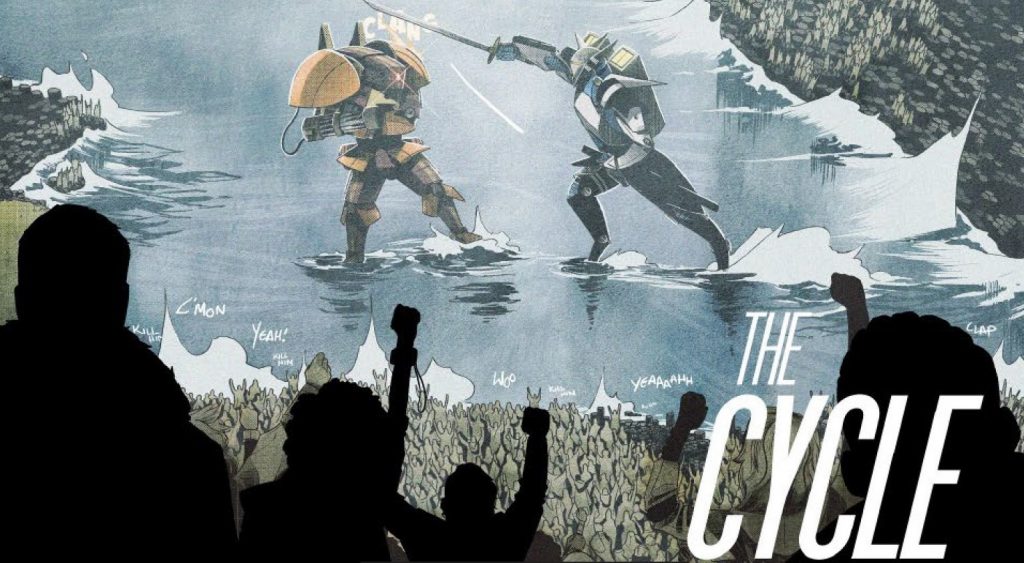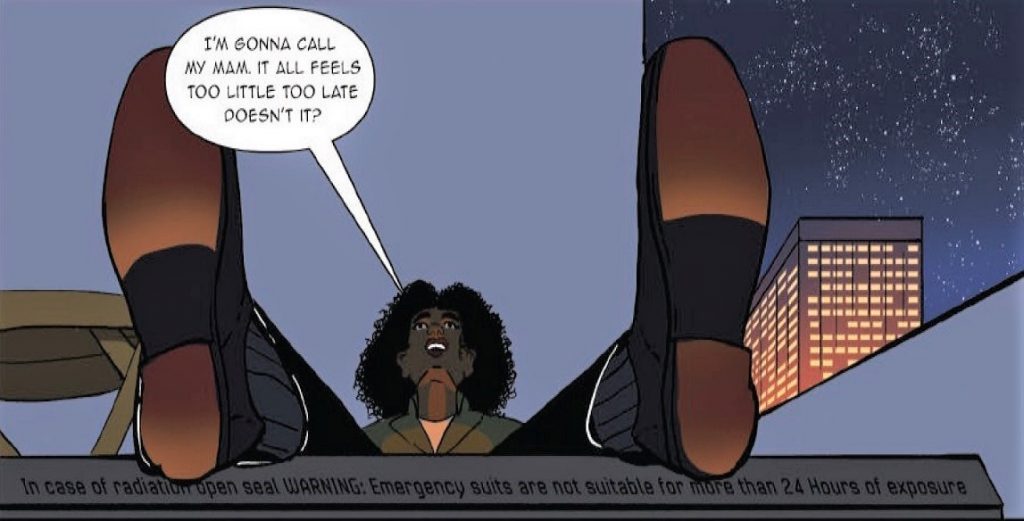
‘Turning Roads’ is an innovative anthology of short narratives centred around the theme of ‘Irish Folklore’ and told through the medium of comics. Consisting of 18 different stories contributed by a range of creators from Ireland and overseas, it was edited and produced by Paul Carroll in early 2022.
It’s probably worth noting up front, that themed anthologies generally come fraught with complications for the people who produce them. Collating works from a wide range of different creators and creative styles can often feel like herding chickens (chickens with ADHD and attention disorders). For ‘Turning Roads’ however, those challenges are even more substantial.
The first challenge is the ‘narrative format’. It’s actually quite hard to write an effective, stand-alone, story so that it fits into a set number of pages and, to achieve that, writers have to use great innovation and practical creativity in terms of compressing the plot and dialogue. Produce those shorts stories in ‘comic’ or ‘graphic’ format however, and suddenly the task becomes that much harder as you also have to take the visual element of your story into account as well.

The second challenge is ‘theme scope’. To put it bluntly, the scope of a theme like ‘Irish Folklore’ is absolutely huge. Sadly, outside of Irish academia and various Celtic Studies circles, there’s actually a very limited understanding around the concept of ‘folklore’. Similar to concepts such as ‘Irish mythology’, it has vastly different interpretations, depending on who you ask, where you ask and when you ask.
Such a wide thematic scope was bound to result in an enormous swath of thematic variety and, of course, that’s what happened here. That issue was astutely picked up on by writer Michael Carroll (no relation to the editor) in the foreword where he openly admits to being thrown by the sheer diversity of the stories. He nicely explains that off as the typical reaction by Irish people when they’re being told what to do – and, to be fair, there’s a certain amount of truth to that.

As a result, the final collection of stories careering down ‘Turning Roads’ incorporates a range of works from ‘ould schtyle’ tales your grandad would have told you, to contemporary sci-fi and fantasy narratives, to hoary plastic paddy pastiche, where every cliche under the sun is dragged out to play. Throw hugely different writing and artwork styles into the mix, and your anthology can start to feel like the first stirrings of a Sunday morning hangover.
So, given the limitations of format and thematic scope …, does it work?
Well, yes and no. The more ‘plastic paddy’ stories (usually those dealing with faeries and leprechauns – ochón, ochón!) tend to be the weaker ones as they’re trapped within established cliches (that’s not always the case, of course and sometimes a weak narrative is effectively saved by impressive artwork).
The stronger stories tend to be those that integrate the visual and written elements to create an interesting or original narrative concept, within the restrictions of the page/panel count. Where the stories successfully manage to incorporate genuine elements of folklore, that’s an additional bonus. Sadly, only a few of the stories actually achieve the latter.

The following were my favourites from the anthology, those stories where the contributing elements of script, artwork, and folklore (not always) combined to produce an effect I appreciated or admire. Needless to say, these were MY personal favourites. I’m pretty sure you’d choose something completely different based on your own taste and personal background.
Bansi (script and art by David Byrne and coloured by Fawn Blackwood)
A tight, tense little story based around two women awaiting the possible end of the world – or Dublin, anyway. Despite the extremely tenuous link with Irish folklore (the ‘Bansi’ computer system of the title is nicknamed ‘Banshee’ – that’s it!), I really enjoyed the stark, yet intimate, atmosphere of two women smoking cigarettes on a Dublin city rooftop, waiting to find out if some foreign missiles are going to destroy the city or not. A very clever, moody story.
The Cycle (written by Gerry Moloney with art and letters by Colin Crakey)
This, the first story in the collection, genuinely caught me by surprise, and it took me a moment to work out what was going on. An ingenious sci-fi reinvention of the battle of Áth Fhirdiad (Ferdiad’s ford – in Ardee, Co Louth), where Cú Chulainn fought his best friend and foster brother Ferdiad, this is a very cleverly done reinterpretation, particularly within such a small panel space.
Mythic Miners (by Dave Hendrick and Pete Marry)
Mythic miners is also a clever reinvention, this one relating to the cliched ‘crock of gold’. The ending is sudden and a bit weak, but the story’s sly humour still works well. I cracked up at the concept of the ‘Bitcoin Billionaire’ discovering ‘trader’ leprechauns in his field.
Long Live the King of the Cats (story by Hugo Boylan with art and letters by Hugh Madden)
King of the Cats is based on the old Cork version of the original tale (which is actually believed to originate from Great Britain). The design and artwork is cleverly orchestrated with the larger cat ‘art’ pieces. I particularly enjoyed the reinterpretation of the story’s ending which is actually far better than the original (the ending in the original tale is far more vague, and weaker for that).
Tell everyone that Irusan Balgury is dead!
The Banshee (story by Kerrie Smith, art by Leann Hamilton)
To be honest, I tend to dislike cliche – particularly where it relates to Irish mythology/folklore. As a result, I wasn’t overly impressed by the simple story but Leann Hamilton’s art blew this out of the water. I’m come across some of her work before, but this is certainly the best I’ve seen to date.

Although the breadth of this anthology was probably over ambitious, as an introduction to Irish comic writers and artists, ‘Turning Roads’ works respectably well and Carroll and his team deserve praise for pulling together a product that achieves that.
For the Irish Comic scene to grow, it needs publications like this, opportunities for budding creators to develop their skills and for the work of more established creators to be exposed to wider audiences. Kudos to O’Carroll for achieving this and for runnning a kickstarer to help fund it. I hope Creative Ireland have the nous to recognise the value of such publications and help fund this in future on an annual basis.


